The Real Power of Predictive Analytics in Ecommerce
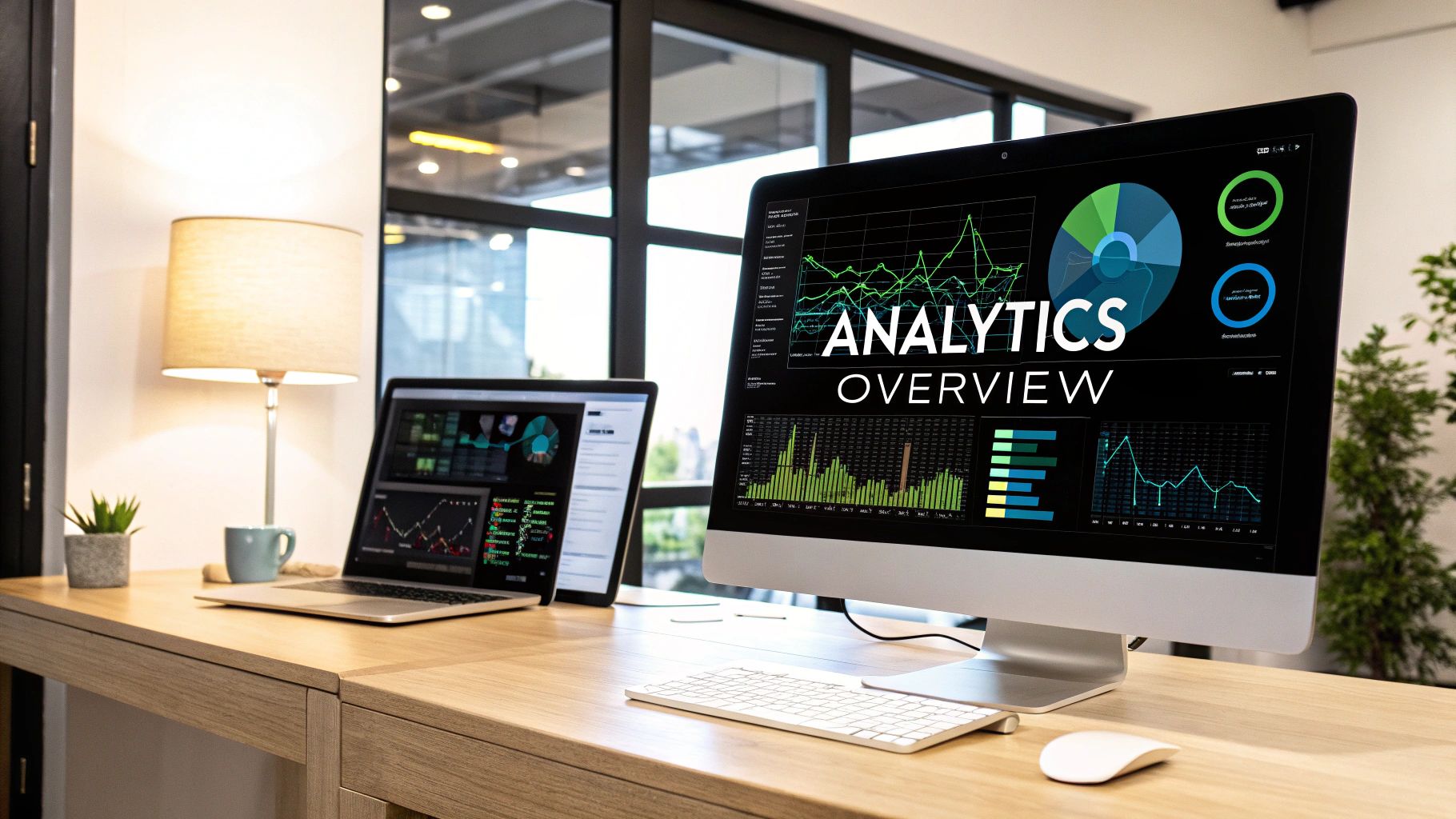
Predictive analytics in ecommerce offers more than just a historical record of sales. It empowers businesses to anticipate future trends and understand how their customers will behave. This proactive approach uses powerful algorithms to analyze historical data, revealing key insights into customer preferences and buying habits. These insights are invaluable for optimizing marketing strategies and making operations more efficient.
For example, imagine a customer regularly browsing running shoes on your website but never making a purchase. Predictive analytics can identify this pattern and trigger a personalized email showcasing new arrivals or offering a discount. This can turn browsing into buying. Furthermore, predictive analytics helps with customer segmentation. This lets you tailor marketing messages for specific customer groups, boosting engagement and, ultimately, sales.
This data-driven forecasting is fundamentally different from traditional reporting, which primarily focuses on past performance. Predictive analytics looks ahead to predict what will happen next, providing a significant competitive advantage. This shift to data-driven decisions is a key characteristic of successful, rapidly expanding ecommerce businesses. Predictive analytics in ecommerce has become essential for accurate forecasting, anticipating customer needs, optimizing marketing, and streamlining operations. By analyzing data, businesses can personalize marketing efforts and improve both engagement and sales figures.
In the UK, a significant ecommerce market, predictive analytics can help businesses connect with the growing number of online shoppers, expected to reach 62.1 million by 2025. This presents a huge opportunity to improve customer experience and drive sales. Want to learn more? Find more detailed statistics here.
Core Technologies Behind Predictive Analytics
Several key technologies drive the capabilities of predictive analytics in ecommerce:
- Machine Learning: Machine learning algorithms uncover complex patterns in data, allowing for more accurate predictions about future customer behavior. These algorithms constantly learn and refine their accuracy as new data becomes available.
- Natural Language Processing (NLP): Natural Language Processing enables computers to understand and interpret human language. This provides valuable insights from customer reviews, social media posts, and other text-based data. NLP can even identify negative sentiment towards a product, alerting businesses to potential problems.
Real-World Examples of Predictive Analytics
Many retailers are already using predictive analytics to gain a competitive edge:
- Dynamic Pricing: Retailers analyze real-time data like competitor pricing, demand fluctuations, and inventory levels to adjust pricing strategies and maximize profits.
- Personalized Recommendations: By suggesting products based on individual customer browsing history, purchase habits, and demographics, businesses can increase average order value and improve customer satisfaction.
- Inventory Management: Forecasting demand allows businesses to optimize inventory levels, reducing storage costs and avoiding stockouts. This is essential for meeting customer expectations, especially in markets with strong demand for fast shipping.
By understanding and implementing predictive analytics, ecommerce businesses can transform raw data into practical strategies, boosting revenue and improving the overall customer experience. The real strength of predictive analytics lies in the ability to anticipate and respond to changing market trends and the individual needs of each customer, ultimately creating a more profitable and sustainable business.
From Basic Recommendations to Profit-Driving Insights
The evolution of predictive analytics in ecommerce is a fascinating journey. It signifies a shift from simple product suggestions to sophisticated forecasting systems impacting every facet of online retail. This transformation has been driven by the convergence of big data, cloud computing, and advancements in AI, creating significant opportunities for businesses of all sizes.
Early predictive analytics primarily focused on basic product recommendations, like the familiar "Customers who bought this item also bought…" suggestions. While helpful, these early systems had limitations and relied on relatively simple algorithms.
They did, however, establish the foundation for the more powerful tools available today. These initial efforts demonstrated the potential of data analysis to improve customer experience and drive sales, encouraging further investment and innovation in the field.
The rise of big data and cloud computing provided the impetus for this innovation. Businesses suddenly had the capacity to store and process massive datasets, revealing deeper insights into customer behavior. Combined with the rapid development of AI and machine learning, this enabled the creation of far more sophisticated predictive models.
Instead of just suggesting related products, these new models could predict future demand, optimize pricing strategies, and even personalize the entire customer journey. This shift marked a pivotal moment in the capabilities of predictive analytics.
Pioneering Companies and Timeless Principles
Early adopters of predictive analytics gained a significant advantage. Companies like Amazon, which invested heavily in these technologies early on, could personalize the customer experience, optimize logistics, and ultimately dominate the market. These early successes highlighted the power of data-driven decision-making and encouraged wider adoption across the industry.
While technology has dramatically improved, core principles remain crucial for success with predictive analytics. These include:
- Focusing on data quality
- Clearly understanding business objectives
- A willingness to adapt and iterate based on gained insights
Even the most advanced predictive models are ineffective if based on flawed data or misaligned with company strategy.
From Optional to Essential
Predictive analytics in ecommerce has evolved from a desirable feature to an essential component for success. In today's competitive market, businesses that fail to utilize these technologies risk falling behind. By leveraging predictive analytics, ecommerce businesses can better understand their customers, optimize operations, and drive sustainable growth.
The ability to anticipate future trends and proactively adapt to changing market conditions is no longer an advantage—it’s a requirement. This underscores the importance of investing in predictive analytics and building a data-driven culture within ecommerce organizations. In the UK, with the ecommerce market projected to reach $194.1 billion by 2027, predictive analytics is no longer a luxury, but a necessity. Explore this topic further. From Amazon’s growth from under $16 million in sales in 1996 to $148 million in 1997, the potential is clear.
Transforming Every Stage of Your Customer Journey
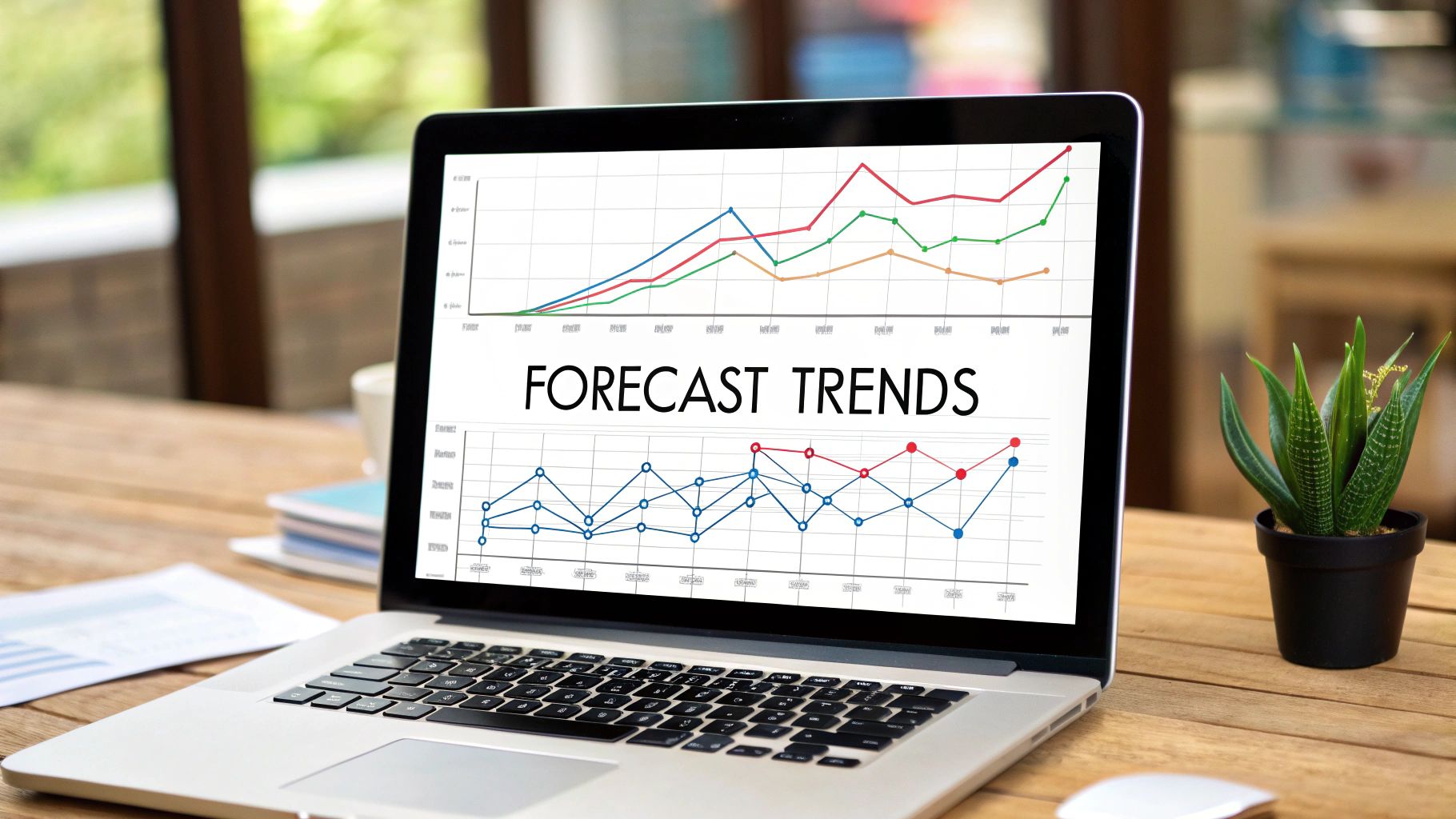
Leading retailers are using predictive analytics in ecommerce to create truly exceptional customer experiences. This goes beyond simply offering basic product recommendations. It's about using data to anticipate customer needs and desires even before they are aware of them. This section explores how predictive analytics transforms each stage of the customer journey, from the initial browsing experience to post-purchase engagement.
Dynamic Pricing Strategies That Maximize Margins
Dynamic pricing, powered by predictive analytics, allows retailers to optimize pricing in real-time. Imagine a highly intelligent, automated system that adjusts prices based on numerous factors.
These factors include competitor pricing, current demand, available inventory, and even individual customer browsing history. Businesses can maximize profits by setting the optimal price at the right moment.
For example, a clothing retailer could increase prices for a popular item during peak seasons. Alternatively, they might offer personalized discounts to customers who have abandoned their shopping carts. Dynamic pricing eliminates the guesswork associated with traditional pricing strategies, ultimately leading to increased revenue and improved margins.
Personalized Recommendation Engines
Personalized recommendations are crucial for enhancing the customer experience and boosting sales. Predictive analytics enhances this by analyzing individual customer behavior to suggest products they are genuinely likely to buy.
This goes beyond simply showing "customers who bought this also bought." It involves understanding individual preferences, browsing patterns, and purchase history to tailor a unique shopping experience.
Personalized recommendations can also introduce customers to new products they might not have otherwise discovered. This approach expands their buying options and strengthens brand loyalty, significantly increasing average order values and building stronger customer relationships.
Advanced Customer Lifetime Value Models
Understanding customer lifetime value (CLTV) is essential for any ecommerce business. Predictive analytics allows retailers to predict the future value of each customer.
This information can guide acquisition strategies, enabling businesses to invest more effectively in acquiring high-value customers. For instance, a retailer might offer a special promotion to encourage a high-CLTV customer to make their first purchase, knowing that their long-term value will offset the initial discount.
This strategic approach maximizes ROI on marketing spend and promotes sustainable business growth.
Let's look at some practical applications of predictive analytics in a tabular format:
Predictive Analytics Applications in Ecommerce
This table provides a comprehensive overview of different predictive analytics applications in ecommerce, outlining their business impact, implementation complexity, and typical ROI timeline.
| Application | Business Impact | Implementation Complexity | Typical ROI Timeline |
|---|---|---|---|
| Dynamic Pricing | Increased revenue and profit margins | Moderate | Short-term (3-6 months) |
| Personalized Recommendations | Increased conversion rates and average order value | Moderate | Short to mid-term (6-12 months) |
| Customer Lifetime Value Prediction | Improved customer acquisition and retention strategies | High | Mid to long-term (12-18 months) |
| Inventory Forecasting | Reduced stockouts and overstocking costs | Moderate | Short to mid-term (6-12 months) |
| Fraud Detection | Minimized financial losses due to fraudulent activities | High | Short-term (3-6 months) |
As the table shows, each application offers unique benefits and requires different levels of implementation effort. Choosing the right application depends on a business's specific needs and priorities.
Measurable Outcomes and Implementation Strategies
Predictive analytics offers tangible benefits for ecommerce businesses of all sizes. Mid-market companies can achieve substantial improvements in customer retention and conversion rates. Larger enterprises can see significant increases in revenue and market share.
Successful implementation requires careful planning and execution. Businesses must focus on data quality, select the right technology, and cultivate a data-driven culture within their organization.
Creating a Cohesive Data Strategy for Sustainable Advantage
Predictive analytics is not just a collection of tools. It's about developing a comprehensive data strategy that drives sustainable competitive advantage. By integrating these capabilities and focusing on continuous improvement, businesses can achieve long-term success in the ever-changing world of ecommerce.
Services like Mergoio can play a key role in providing the data and insights needed for effective predictive analytics. This enables businesses to track important metrics, understand market trends, and make data-driven decisions to optimize their operations and maximize profitability.
By transforming data into actionable insights, predictive analytics empowers ecommerce businesses to make informed decisions, personalize the customer journey, and achieve sustainable growth.
Mastering Inventory Management With Predictive Power
Inventory management is often a major expense for ecommerce businesses. However, predictive analytics is changing the way we think about inventory, transforming it from a cost burden into a strategic advantage. Forward-thinking companies are using predictive forecasting models to fine-tune inventory levels, resulting in significant cost savings and happier customers.
The Power of Predictive Forecasting
Traditional inventory management often relies on historical data and educated guesses, which can lead to inaccuracies and inefficiencies. Predictive analytics uses advanced algorithms to analyze a much broader range of data, including seasonality, marketing campaigns, and even competitor activity. This results in more accurate predictions that can adapt to the ever-changing market.
For example, if a retailer is planning a large marketing campaign, predictive analytics can forecast the expected increase in demand and make sure there's enough inventory to meet it. This prevents lost sales due to stockouts while minimizing excess inventory after the campaign ends.
Optimizing Reorder Points and Safety Stock
Predictive analytics helps determine the best reorder points for each product. This ensures that new orders are placed at just the right time to avoid running out of stock while keeping storage costs low.
Predictive analytics also helps calculate the right safety stock levels. Safety stock acts as a cushion against unexpected changes in demand or supply chain disruptions. By accurately forecasting demand, businesses can optimize safety stock levels, reducing the risk of stockouts and minimizing the cost of holding onto extra inventory.
Streamlining Inventory Distribution
For businesses with multiple warehouses or fulfillment centers, predictive analytics optimizes inventory distribution across different locations. By predicting demand in various geographic areas, companies can strategically position their inventory, which lowers shipping costs and delivery times. This is especially crucial for meeting customer expectations in today's market.
Meeting consumer demands for quick, affordable shipping is more important than ever. In the UK, for example, over 50% of consumers consider same-day delivery important, and more than 60% expect next-day delivery. Predictive analytics helps businesses meet these expectations by ensuring the right products are in stock at the right time, leading to improved customer satisfaction and loyalty. Discover more insights about UK ecommerce trends.
Real-World Success Stories
Many retailers have seen impressive results by using predictive inventory management. Some have reduced inventory costs by as much as 20% while also improving product availability and delivery speed.
These success stories highlight the real benefits of using predictive analytics for inventory management. The ability to anticipate demand fluctuations, optimize safety stock, and streamline distribution leads to substantial cost savings and greater customer satisfaction.
Handling Ecommerce-Specific Challenges
Predictive analytics is particularly helpful for tackling challenges unique to ecommerce, like flash sales and new product launches. Accurate demand forecasting is essential for flash sales to ensure adequate inventory without having too much leftover stock. For new product launches, predictive models can help estimate initial demand, reducing the risk of both stockouts and overstocking. This allows businesses to respond more effectively to the specific demands of online retail.
Measuring Success With Predictive Analytics
Tracking the impact of predictive analytics is vital for getting the most out of it. Using metrics like inventory turnover rate, stockout frequency, and carrying costs gives you a clear picture of how effective your strategy is. The following table illustrates how these key performance indicators (KPIs) might change after implementing predictive analytics.
The table below, "Inventory Optimization Metrics Before and After Predictive Analytics," provides a statistical comparison showing the impact of implementing this technology.
| Metric | Before Predictive Analytics | After Implementation | % Improvement |
|---|---|---|---|
| Inventory Turnover Rate | 4 | 6 | 50% |
| Stockout Frequency | 10% | 2% | 80% |
| Carrying Costs | $100,000 | $80,000 | 20% |
As you can see, the improvements across these key metrics are substantial. This data-driven approach allows for continuous improvement and makes sure that your inventory management strategies stay aligned with your business goals.
By mastering inventory management with the power of prediction, ecommerce businesses can gain a significant competitive advantage. This means not only implementing the technology but also building a data-driven culture that empowers teams to make smart decisions based on the insights provided by predictive analytics.
Winning With Hyper-Personalized Customer Experiences
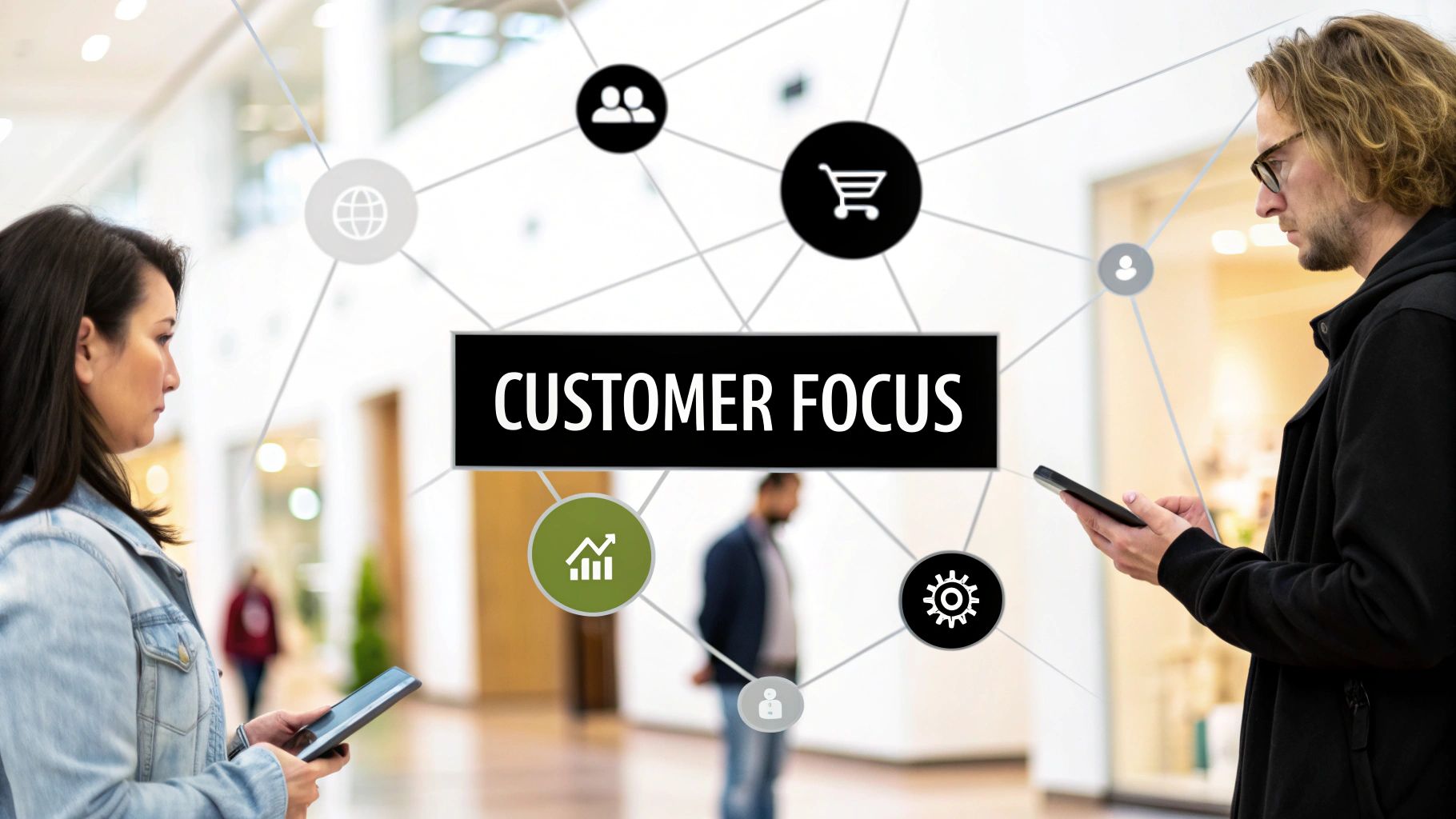
Personalization has evolved from a desirable feature to an absolute necessity in today's competitive ecommerce environment. Predictive analytics in ecommerce allows businesses to take personalization to the next level, creating hyper-personalized experiences that deeply resonate with individual customers. This involves understanding and anticipating customer needs and preferences, even before they are explicitly expressed.
By using data-driven insights, businesses can create shopping experiences that feel uniquely designed for each individual.
Understanding Your Customers Through Data
Predictive analytics employs complex algorithms to analyze large volumes of customer data. This data includes purchase history, browsing behavior, and website engagement metrics. Businesses can then segment customers into dynamic groups based on individual characteristics and preferences. This granular level of understanding enables highly targeted messaging and personalized offers.
For instance, a customer who frequently browses high-end electronics might receive personalized recommendations for premium accessories or exclusive deals. Conversely, a first-time customer might be presented with introductory offers and helpful product information.
Delivering Truly Personalized Experiences
Predictive analytics enables personalization across the entire customer journey. This translates into several key benefits:
-
Tailored Landing Pages: Customers can be directed to landing pages specifically designed for their interests, based on past browsing activity or search queries. This targeted approach increases engagement and boosts conversion rates.
-
Customized Email Campaigns: Emails featuring products or promotions relevant to individual preferences lead to higher open and click-through rates. This ensures that marketing messages are seen and acted upon.
-
Individualized Product Recommendations: Suggesting products aligned with a customer's tastes and needs increases the average order value and encourages repeat purchases. This personalized approach helps customers discover products they are likely to love.
-
Dynamic Pricing: Offering personalized discounts based on browsing history or loyalty status strengthens customer relationships and encourages conversions. This can be a powerful tool for rewarding loyal customers and attracting new ones.
These tailored experiences cultivate stronger customer loyalty and enhance overall satisfaction, making customers feel valued and understood.
Balancing Personalization With Privacy
Data privacy is paramount. Businesses must carefully balance the advantages of personalization with the need to protect customer data. Transparency is essential. Customers should understand how their data is being used and have the ability to manage their privacy preferences. This approach builds trust and reinforces a positive brand image.
Measuring Personalization Effectiveness
Implementing predictive analytics isn't enough; measuring its impact is crucial. Key metrics to track include:
-
Conversion Rates: Monitor how personalized experiences affect the percentage of visitors who complete desired actions, like making a purchase.
-
Average Order Value: Analyze the impact of personalization on the average amount spent per order.
-
Customer Lifetime Value: Assess how personalized experiences influence the long-term value of individual customers.
-
Customer Retention Rates: Track how personalization affects the percentage of customers who return for repeat business.
By tracking these metrics, businesses can refine their personalization strategies and maximize ROI. Services like Mergoio offer valuable data and insights that drive effective predictive analytics. This empowers businesses to measure and optimize personalization efforts for continuous improvement and a competitive edge. This data-driven approach ensures businesses can continually adapt and stay ahead.
Hyper-personalization, powered by predictive analytics, is reshaping the ecommerce landscape. By understanding individual customer preferences and anticipating their needs, businesses create experiences that drive engagement, build loyalty, and ultimately, fuel revenue growth. A customer-centric approach, balanced with respect for privacy, fosters long-term, profitable relationships in the dynamic world of online retail.
Implementing Predictive Analytics (Without The Headaches)
Implementing predictive analytics in ecommerce can feel overwhelming, but a clear plan and the right approach can simplify the process for businesses of any size. This section outlines the key steps for successful implementation, based on expert insights.
Data Collection: The Foundation of Predictive Analytics
The first step is building a solid data collection strategy. This means identifying the data points most relevant to your business goals. For example, personalizing product recommendations requires data on customer browsing history, purchase patterns, and product preferences.
Accurate, consistent, and clean data is also essential. Poor data quality significantly impacts the effectiveness of predictive models. Just like baking a cake with spoiled ingredients yields poor results, flawed data leads to inaccurate predictions.
Choosing The Right Technology Stack
Selecting the appropriate technology is critical. Options range from ready-made solutions to custom-built platforms. Consider factors such as budget, technical skills, and specific business requirements.
- Pre-built solutions: These offer a faster and often more cost-effective entry point, generally easier to implement and requiring less technical expertise.
- Custom-developed platforms: These offer greater flexibility and customization but demand substantial investment and technical resources.
A smaller business might choose a pre-built solution that integrates with their current ecommerce platform, while a larger enterprise with complex needs might choose a custom-developed system.
Building Your Team and Capabilities
Implementing predictive analytics requires a skilled team. This might involve hiring data scientists, analysts, and engineers, or training existing employees. If building an internal team is impractical, consider outsourcing to specialized agencies or consultants. This ensures you have the expertise to manage and interpret data effectively.
Overcoming Common Implementation Roadblocks
Several challenges can arise during implementation:
- Data Quality Issues: Addressing data inconsistencies and errors is crucial for accurate predictions.
- Organizational Resistance: Securing support from all stakeholders is vital. Clearly communicate the benefits of predictive analytics to overcome any objections.
- Integration Challenges: Ensure seamless integration with existing systems to prevent data silos and maximize data value.
Proactively addressing these challenges ensures a smooth implementation. For example, regular data audits can help maintain data quality, while training can educate employees on the value and use of predictive analytics.
Build vs. Buy: Making The Right Choice
Deciding whether to build or buy a predictive analytics solution is a key decision. Factors like budget, internal resources, and desired customization level will influence this choice. Building a solution offers complete control but requires significant time and investment. Buying a pre-built solution is quicker and less costly but may have limited customization options.
Quick Wins and Long-Term Strategies
Focus on achieving quick wins early on. This builds momentum and demonstrates the value of predictive analytics. For example, implementing personalized product recommendations can quickly increase sales and improve customer engagement.
At the same time, develop a long-term strategy for developing more sophisticated capabilities, such as dynamic pricing and advanced customer segmentation. This balanced approach ensures both short-term gains and long-term success. Ecommerce tools like Mergoio provide essential data tracking and analysis for successful predictive analytics implementation, replacing guesswork with data-driven decisions. This empowers businesses to understand their performance, forecast potential outcomes, and achieve sustainable growth. By carefully planning and executing these stages, even small and mid-sized companies can successfully navigate the complexities of predictive analytics and unlock its potential to drive growth.
Future-Proofing Your Ecommerce Growth Strategy
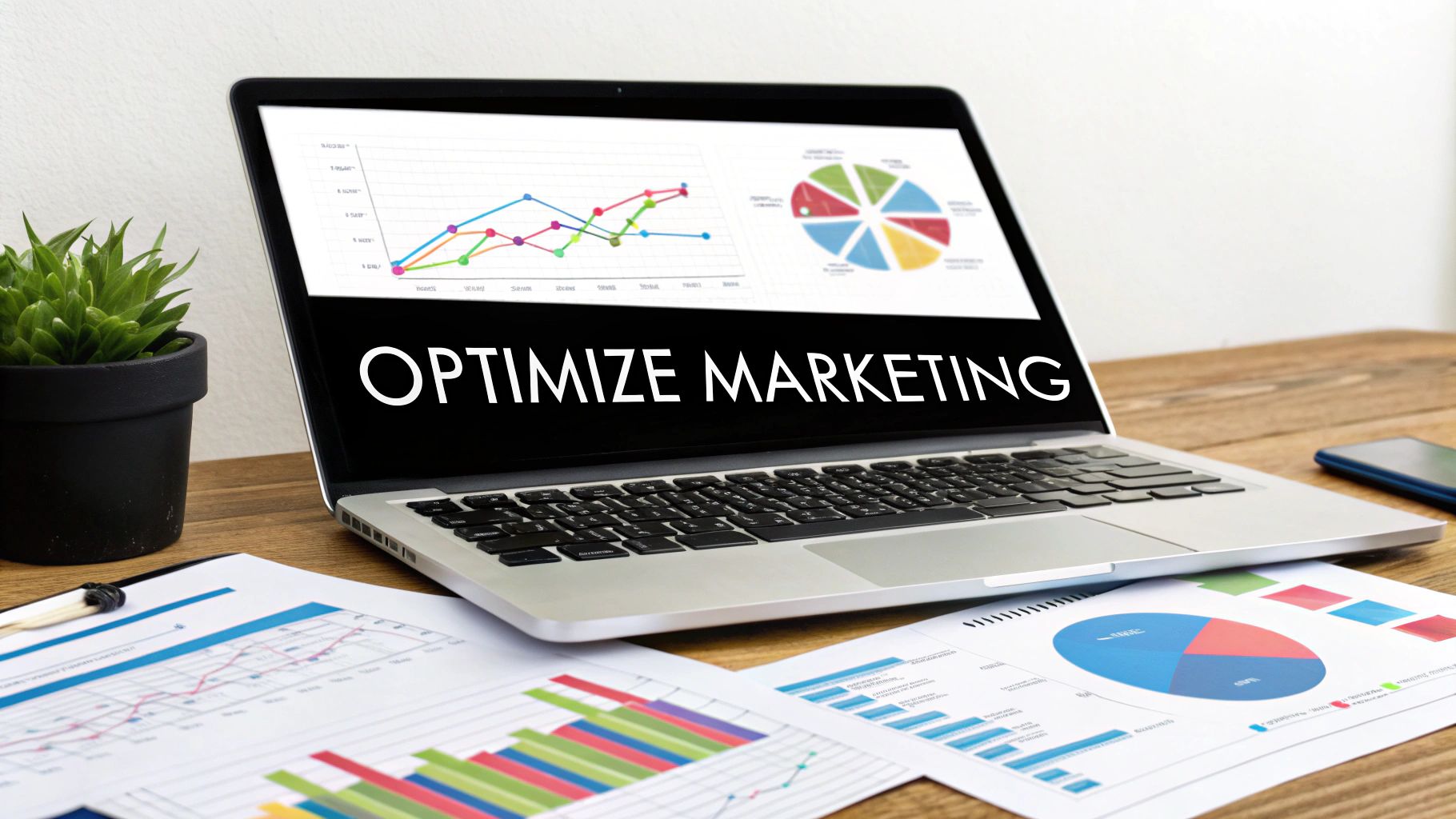
Predictive analytics is constantly changing the ecommerce landscape. This section explores emerging technologies that are reshaping data-driven decision-making in online retail. We'll examine how advancements in artificial intelligence are giving businesses new tools to understand customer intent and create highly personalized experiences.
The Rise of Real-Time Analytics
Real-time analytics is revolutionizing business operations. Data is processed and analyzed the moment it's generated, allowing for instantaneous reactions to market fluctuations and shifts in customer behavior. This enables businesses to implement dynamic pricing, offer immediate personalized recommendations, and provide improved customer service. For example, if a customer abandons their online shopping cart, real-time analytics can trigger an immediate email with a personalized discount, potentially saving the sale. This level of speed and responsiveness isn't possible with traditional analytics.
Deep Learning and Computer Vision
Deep learning, a subset of machine learning, is making significant advancements in predictive analytics. Deep learning algorithms can sift through large, complex datasets, uncovering subtle patterns that traditional algorithms often miss. This leads to more accurate predictions of future trends, better demand forecasting, and a deeper understanding of customer behavior. Computer vision allows AI to interpret images. This has numerous applications in ecommerce, including product recognition, visual search, and even gauging customer emotions from facial expressions. Imagine a customer searching for a product by uploading a similar image – computer vision makes this a reality.
Natural Language Processing: Understanding Customer Intent
Natural Language Processing (NLP) is becoming increasingly sophisticated. It's no longer limited to basic sentiment analysis. Advanced NLP models can now understand the nuances of human language, enabling more accurate identification of customer intent from various text sources like customer reviews, social media comments, and online chat conversations. NLP can even identify specific product features mentioned in reviews, providing valuable insights for product development and marketing strategies.
Ethical Considerations and Data Privacy
As predictive analytics becomes more powerful, ethical considerations and data privacy are paramount. Businesses must prioritize protecting customer privacy and be transparent about how they collect and use customer data. Regulations like the General Data Protection Regulation (GDPR) and the California Consumer Privacy Act (CCPA) are setting important standards for data privacy, making compliance essential.
Navigating the Future of Ecommerce
The future of ecommerce is undeniably data-driven. Businesses must prepare for a future where predictive analytics is a core business function. This means investing in the right technologies, building data-savvy teams, and fostering a culture of continuous improvement. Staying informed about emerging trends and regulations is also crucial for long-term success.
Are you ready to leverage the power of predictive analytics for your ecommerce business? Mergoio provides the tools and insights needed to make data-driven decisions and achieve sustainable growth. Our platform offers real-time analytics, advanced forecasting, and a comprehensive dashboard that gives you a deep understanding of your ecommerce business. Join our beta program today and experience the future of ecommerce analytics. Explore Mergoio and transform your business.
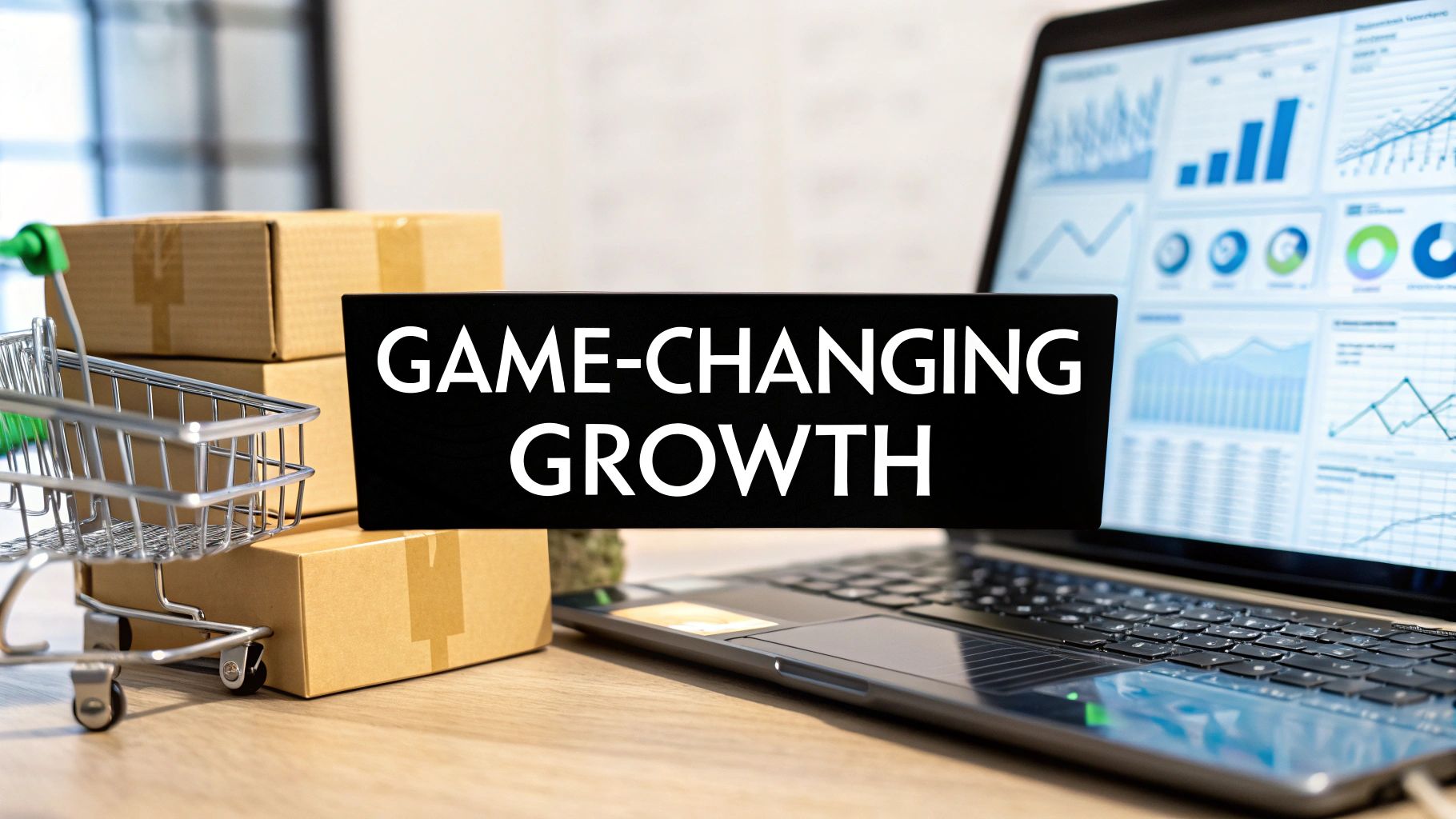
Leave a Reply